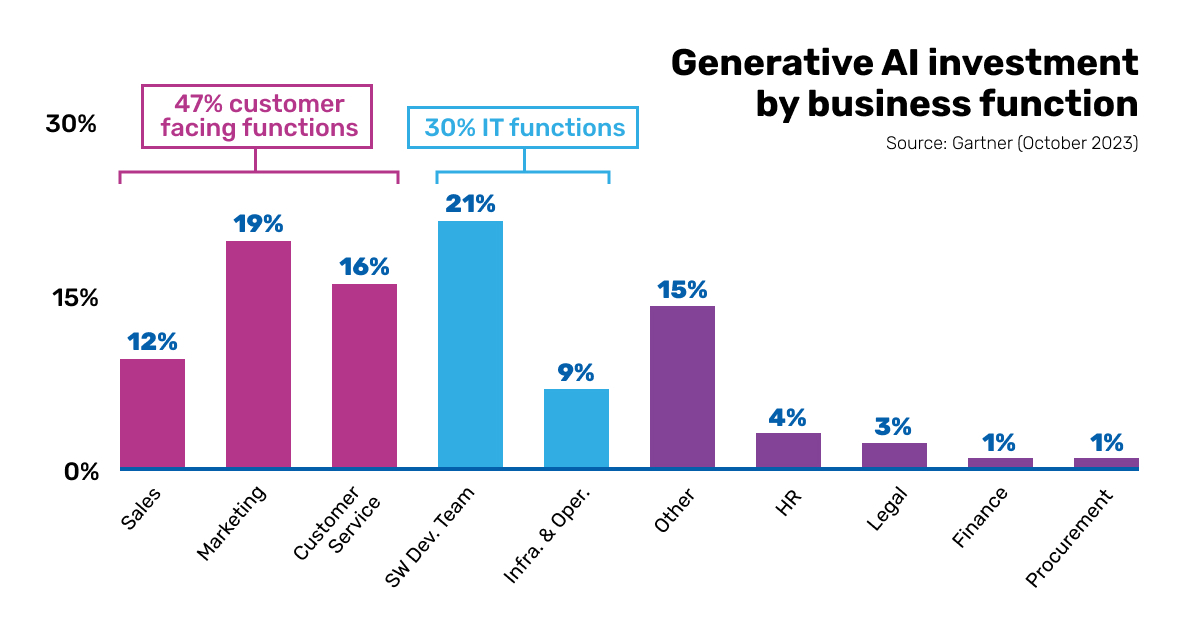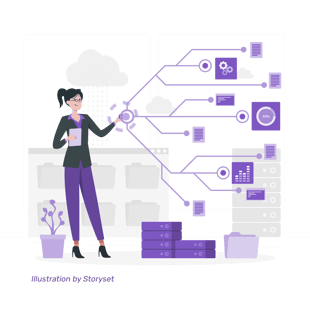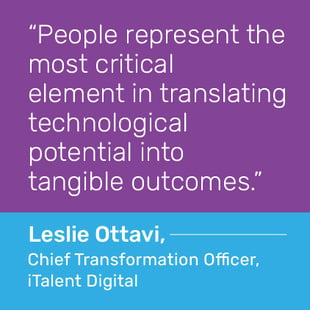Keeping an eye on the people in an AI-infused world

The advent of generative AI has dramatically reshaped customer experience (CX) and revolutionized how companies interact with their clientele. Understanding the full spectrum of customer experiences, however, requires consideration of a more inclusive framework: total experience (TX).
Total experience is based on a combination of CX, employee experience (EX) and user experience (UX). Together, they form a trinity that highlights an essential truth: the well-being and satisfaction of employees have a profound impact on customer interactions, loyalty, and brand attachment. That is why it is important to blend technological innovation with human-centric strategies to create meaningful connections and drive business success.
The intersection of CX, EX and UX
The synergy between customer experience, user experience (UX), and employee experience is critically important. Stellar customer experiences are created when thoughtful employee experience is coupled with a seamless UX provided by the technologies employees and customers interact with. It’s a simple equation: when employees are satisfied and engaged, their enthusiasm naturally translates to superior customer service. That, in turn, cultivates a positive experience for customers and bolsters brand loyalty.
Imagine a customer navigating a company’s website. If the site is intuitive and allows them to find what they need effortlessly, their interaction with the brand starts on a high note. Should they encounter an issue and have it swiftly resolved by a well-informed employee, there are two complementary benefits: a satisfied customer and an empowered employee who takes pride in their role. This cycle of positive experiences is fueled by a corporate culture deeply committed to exceptional customer service, where employees are empowered to make decisions that benefit the customer.

Nurturing a positive employee experience is essential to fostering a thriving customer experience. It’s a symbiotic relationship where each facet enhances the other, collectively elevating the total experience to new heights.
The accelerating technological landscape
We are experiencing a rapid technological evolution, with key advances converging. Artificial intelligence (AI), the Internet of Things (IoT), virtual and augmented reality (VR/AR), cloud computing, blockchain, and 5G are all coming together. While they have distinct names, these technologies do not exist in a vacuum; they interact with each other and are becoming increasingly integrated, forging a path toward what we call the intelligent enterprise. It is this intelligent enterprise that promises an ecosystem where systems and processes automate manual tasks and free up time for creative thinking and deeper human engagement.
For that to happen, however, substantial shifts in both technology deployment processes and business models are required. At the center of these shifts are people—the most critical element in translating technological potential into tangible outcomes. Recognizing the human element in technology adoption is crucial as we strive toward this future. It’s not technology alone but collective human insight, creativity, and adaptability that will steer organizations through the changes to come.
The challenge of change saturation
As businesses fervently push their digital transformation agendas, they encounter an often-overlooked barrier: change saturation. This phenomenon occurs when the pace and volume of change lead to fatigue and uncertainty about the future. This trend is becoming all too familiar and reveals how the challenge lies not in the technology but in managing the human aspects of change that the technology involves.
A report by the change management firm Prosci sheds light on this pressing issue: An alarming 73% of organizations teeter on the edge of change saturation or have already surpassed it.

This brings us to a key realization: Digital transformation isn’t about just implementing a sequence of new systems. It’s actually about the people who bring their unique perspectives to the forefront of the transformation. It requires a culture of empathy where listening to employees and supporting them are just as vital as achieving the business results that drive change.
Organizations must cultivate an environment where individuals are not overwhelmed by the tidal wave of change but can traverse through it while having their unique capabilities recognized and valued.
Achieving clear change visibility through stakeholder-focused analytics
High change visibility is a critical component of a superior customer experience. Enterprises must gain thorough insight into the array of transformation initiatives unfurling across the organization. This visibility helps everyone understand their individual and collective impact on every stakeholder, including employees, customers, and partners.
To gain this crucial visibility, many companies appoint a chief experience officer (CXO) to manage all initiatives affecting the customer journey. Gartner’s 2019 Customer Experience Management Study found that 90% of surveyed companies employ a CXO or someone in a similar role dedicated to guiding the organization’s CX strategy. Typically, CXOs address employee experience while synchronizing it with customer experience to optimize the overall total experience. 
A key hurdle in centering an organization on CX is breaking through data silos. The typical approach, which involves gathering data from various programs and projects, falls short of providing the holistic view necessary to truly gauge stakeholder impact. What’s required is the "big flip" to a stakeholder perspective, which shifts the organization from a project-centric view of change to a people-centric one.
This strategic pivot in perspective is a practical approach to embedding change management deeply into the operational core of an organization. In a landscape where change is both constant and escalating, it’s crucial to manage it holistically, ensuring consistency of strategy from the enterprise level down to individual projects.
The “big flip” enables organizations to oversee change across stakeholder groups at the program or portfolio level, which helps with effectively managing priorities and impact while mitigating change saturation. It allows enterprises to anticipate and promote key behavioral changes that are essential in an AI-driven workplace. It also fosters informed decision-making to realize optimal business outcomes and encourages a culture of transformation that prioritizes stakeholders throughout the lifecycle of any initiative.
Leveraging data analytics and AI for experience-driven decision-making
 Data analytics and AI are revolutionizing how decisions are made in businesses. By putting people at the center of their strategies, companies can integrate data deeply into the overall experience. This approach tackles the issue of change saturation and drives an enterprise towards its objectives.
Data analytics and AI are revolutionizing how decisions are made in businesses. By putting people at the center of their strategies, companies can integrate data deeply into the overall experience. This approach tackles the issue of change saturation and drives an enterprise towards its objectives.
iTalent Digital leverages these tools in multiple ways. Our ChaMa software employs AI to analyze insights into how enterprise initiatives impact people to guide stakeholder support through every stage of a transformation. This predictive and prescriptive approach optimizes outcomes while smoothing out transitions.
Similarly, MojoHire.ai, a product of iTalent’s innovation lab, uses AI to assess candidates not just on qualifications but also on cultural alignment. It draws from a deep well of data to match the characteristics of previously successful hires as well as suitability for a given open req.
A unifying vision: harnessing total experience for business evolution
The digital age calls for a seamless total experience strategy that harmonizes customer experience, user experience and employee experience. Businesses must pivot to a model that actively listens and responds to the “voice of the people” and ensure that every corporate initiative enhances this integrated experience.
Embracing data analytics and AI is pivotal to achieving a nuanced understanding of total experience. Taking this step lets organizations unlock a comprehensive view of their operations—from internal processes to customer interactions—leading to more informed decision-making and robust business growth.
Contact me at change@italentdigital.com to speak about how iTalent Digital can help your organization achieve the “big flip” to the stakeholder view and deploy a total experience strategy.
You may also like:
Why CX leaders should integrate change management into all they do
Why and how to add change management to your project management approach
How to use data to build a business case for change management



